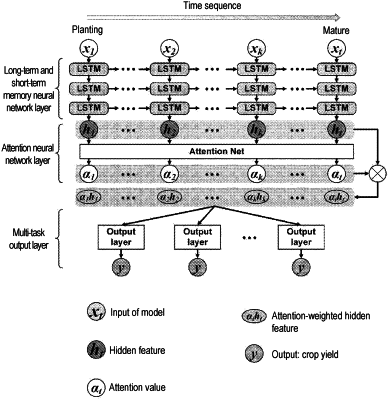| CPC G06Q 50/02 (2013.01) [G01W 1/02 (2013.01); G06N 3/045 (2023.01); G06N 3/049 (2013.01); G06N 3/084 (2013.01); G06Q 10/04 (2013.01)] | 6 Claims |

|
1. A crop yield estimation method based on spatio-temporal deep learning, comprising the following steps:
step 1): obtaining and preprocessing a historical crop yield data and a historical meteorological data of a region, preprocessing the historical meteorological data to obtain meteorological parameters, preprocessing the historical crop yield data to obtain a detrended yield, and taking respectively the meteorological parameters and the detrended yield as input data and output data of a crop yield spatio-temporal deep learning model;
step 2): constructing the crop yield spatio-temporal deep learning model, and optimizing hyperparameters of the crop yield spatio-temporal deep learning model;
step 3): forming a training set sample by taking the meteorological parameters obtained in step 1) as the input data and the detrended yield obtained in step 1) as the output data so as to train the crop yield spatio-temporal deep learning model, obtaining optimal parameters of the crop yield spatio-temporal deep learning model after multiple rounds of the training, and then obtaining a trained model; and
step 4): inputting the meteorological parameters of a crop yield to be estimated into the trained model, and outputting an estimation result to obtain a crop yield estimation result.
|